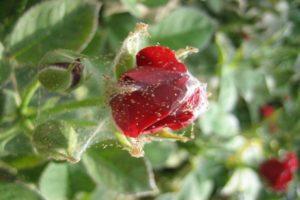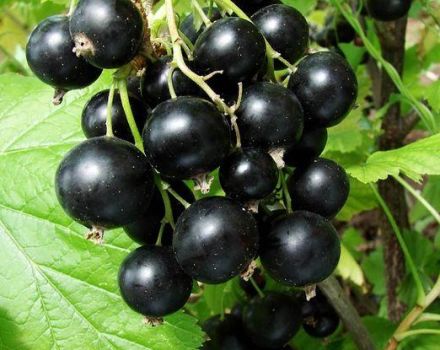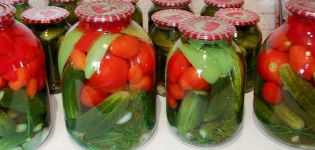Description of the best varieties of Dutch roses, planting features and pest control
Dutch roses are the preferred choice for many gardeners around the world. The culture is quite whimsical, caring for it will not be easy. However, the result will be worth the effort. High quality flowers differ from each other in bushes height, shades and bud size. Regardless of your choice, any variety will delight the eye with its sophistication.
The advantages and disadvantages of culture
Many people think that Dutch roses are a plant cultivar. In fact, this is the name of a type of flowers. This name means that these varieties were bred by Dutch breeders. These roses are most often seen in flower shops.
Dutch roses are also suitable for growing on your site. This will take a lot of diligence and attention to the plants.
Advantages and disadvantages of Dutch roses
Pros:
- variety of varieties;
- long-term preservation of buds after cutting;
- abundant flowering;
- high resistance to cold weather.
Minuses:
- plants are demanding to care for;
- difficult to propagate.

The use of Dutch roses in landscape design
Dutch roses are often used by gardeners as elements of landscaping. Roses are often used as accents - for these purposes, flowers must have a non-trivial shape that attracts attention with a bright color.
Flowers of soothing shades and classic varieties are used as the main plants that set the mood of the whole composition. It is important to pay special attention to the properties of the selected variety - its size in adulthood, the duration of flowering.
Large roses will create a harmonious backdrop for smaller flowers and shrubs. Small, growing bushes are suitable for the background of separately growing large plants.
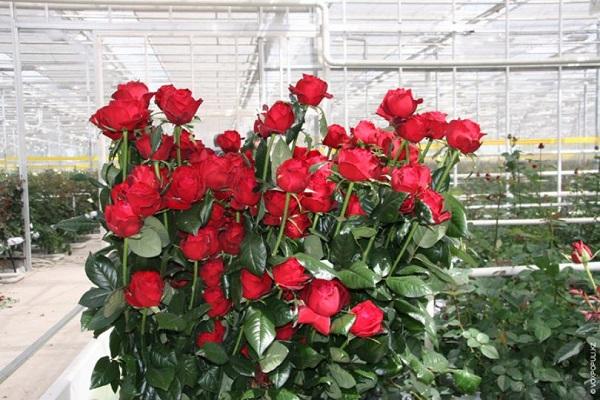
The best varieties of Dutch varieties
In order not to get confused when seeing the varietal variety of Dutch roses, you should familiarize yourself with the main types in advance.
the Grand Prix
One of the most popular varieties. Once cut, the flowers are able to maintain a presentable appearance for about two weeks. The Grand Prix tolerates frost down to -15 degrees. The plant is a voluminous bush, about a meter high. The bud is burgundy in color. Flowers with a diameter of 10 to 12 centimeters.
Lovely Lydia
This plant is a short bush of 50-80 centimeters, with a large number of buds. The buds are no more than 3 centimeters in size, bright pink in color. Withstands cold well, weakly resistant to diseases.
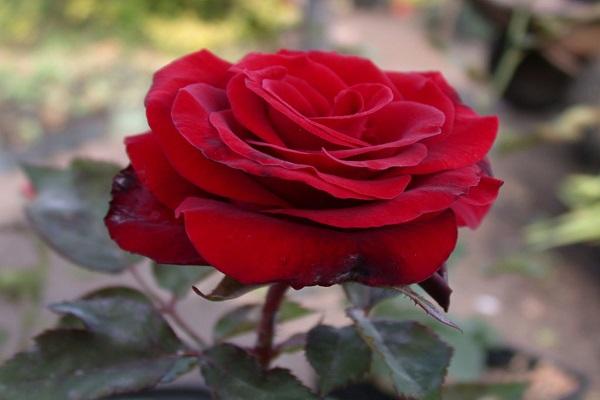
Avalanche
The rose is white with a slight greenish tint. Bulky flowers characterized by long flowering. The plant can grow to a height of 60 to 90 centimeters. It tolerates frost well, has immunity from powdery mildew.
Freedom
The bush is large - it can reach a height of 2 meters. Slightly elongated buds, about 13 centimeters in diameter. The plant is frost-resistant, likes to grow in moderately shady places. The buds are dark red, velvety in color. The petals have wavy edges.
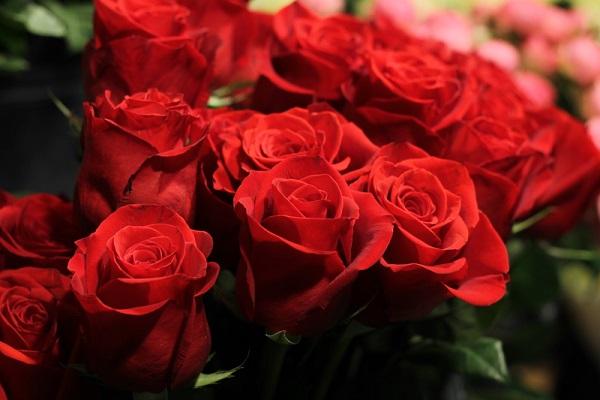
High Magic
The variety is hybrid tea. The bush is about 1 meter high. There are no thorns on the stems. The scent of the flower is weak. As a rule, it blooms one bud, but there is also flowering with brushes. The color of the buds is yellow-red, “fiery”. Among the properties of the plant, frost resistance and a low probability of disease occurrence are noted.
Mohana
This variety grows in compact shrubs up to a meter high and up to 60 centimeters wide. A large number of leaves are dark green. There are almost no thorns on the stems. Large yellow flowers with reddish edges. Faint aroma. Not afraid of bad weather, frost and disease.
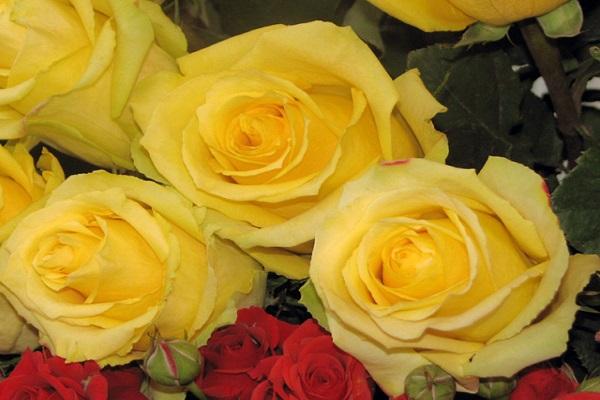
Wendela
A bush up to a meter high, with delicate creamy white buds. It often becomes the basis of wedding bouquets. Medium resistant to precipitation and frost, does not tolerate diseases very well. At temperatures below +6 degrees, the plant should be sheltered.
Landing features
Dutch rose varieties are planted outdoors at the end of spring to avoid sudden temperature changes and facilitate survival in a new location. The landing site must be protected from the winds. Also, most varieties of Dutch roses need sun. Plants like soil that is loose, moderately moist, with minimal acidity. Air circulation is important. To increase the air flow, sand or peat can be added to the ground.
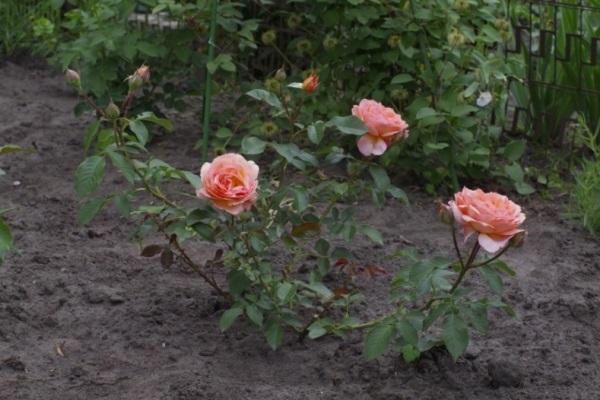
The soil should not be too wet, and roses should not be planted in places where groundwater is located close to the upper layers of the soil. Overripe manure or compost is suitable as fertilizer. Seedlings must be carefully examined before planting. Damaged, dried parts are removed. If you propagated roses by cuttings, they should be planted in the ground at the moment when sprouts appear from the buds.

Basic requirements for growing
In spring, fertilizing with nitrogen is useful for flowers. Before flowering, about three weeks, phosphorus-potassium fertilizers are used. Since mid-July, feeding is no longer done in order to make it easier for the flower to prepare for winter.
In order to provide plants with good growth conditions, do not forget to fertilize on time.
Watering is calculated based on the weather. Roses do not like excess moisture. The water should be at room temperature, best of all, settled. It should be watered at the root, avoiding water getting on the leaves and flowers of the plant. For the winter, flowers need to be covered. In the first winter, the plant is covered with spruce branches and linen.

Reproduction methods
Dutch roses should be propagated by cuttings. For reproduction, roses are taken without visible damage, which, after cutting, are about two weeks old.
Cuttings are cut from the middle of the stem. 2-3 buds should grow on one piece. From below, the cut is made at an angle of 45 degrees, under the lower kidney. Immersed in a solution that activates the growth of the root system. The upper edge is cut at right angles, treated with paraffin or wax.
After that, the cuttings are immersed in water or nutrient soil. Cover with a bag, film or jar. After a couple of weeks, sprouts will appear from the buds.
The emergence of sprouts means that the root system has begun to form. After that, it's time to plant the cuttings in the ground.Roses grown in this way are best grown indoors, but flowers are often grown outdoors as well.
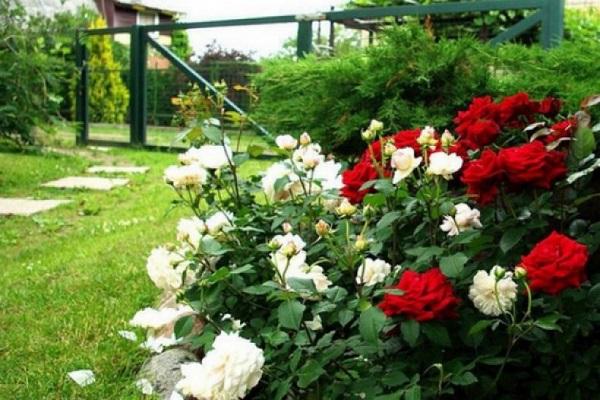
Pest and disease control of roses
Before winter, when the plant loses its leaves, they are harvested and burned, since parasites that are dangerous for roses hibernate in the leaves. A dangerous enemy of Dutch rose varieties is the spider mite. These insects are difficult to see on the plant, but they are the ones that lower the flower's natural defense against other parasites and diseases.
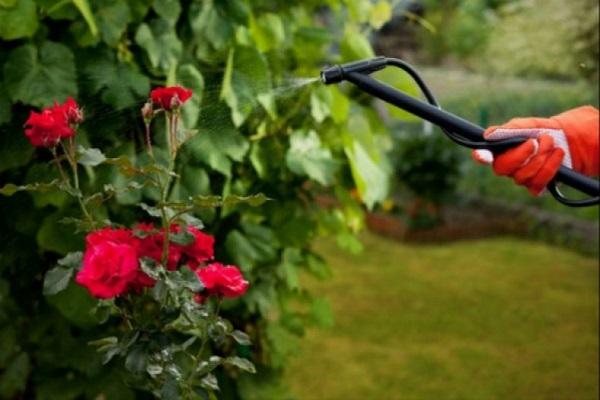
For preventive purposes, the plants need to be periodically inspected. Noticing a spider's nest on the plant, you must also get rid of it. If the plant is healthy, it can defeat the disease on its own. In order to help the plant, it is important to organize watering in time and in moderation, do not forget about the temperature regime, and periodically weed.
In summer, for preventive purposes, the treatment of bushes with soapy water is used. At the same time, the lower part of the plant is processed. Moreover, this procedure is carried out on a cloudy day or after sunset in order to protect the rose from sunburn.
